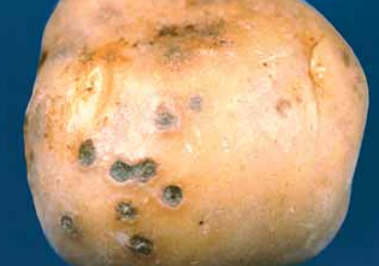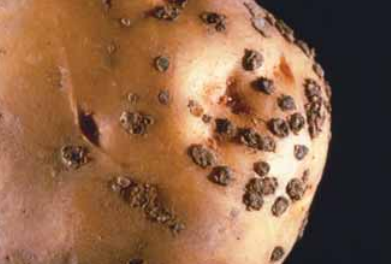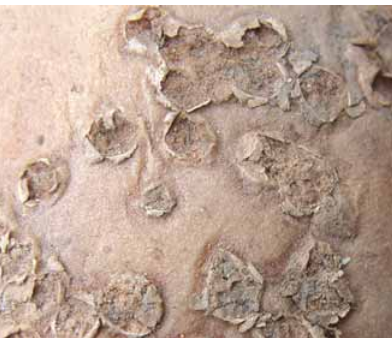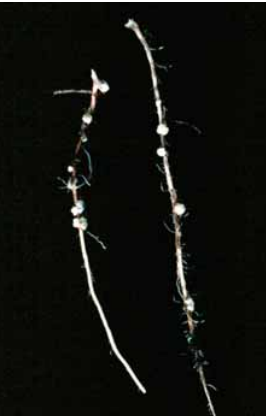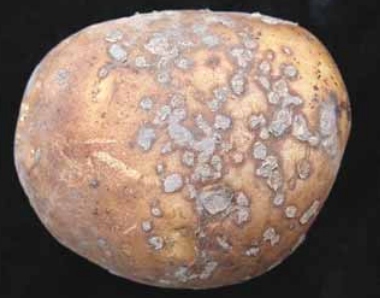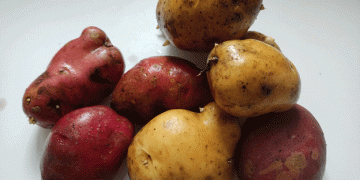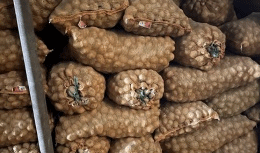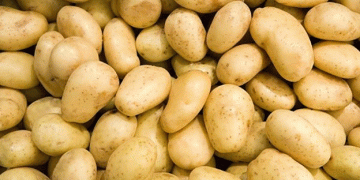Pathogen. The powdery scab fungus may survive many years in the soil as resting spores. It attacks roots, stolons, young shoots and tubers. The fungus is spread by planting infected seed tubers, by moving infested soil or by spreading contaminated cattle manure.
Disease development. Powdery scab is most common in cool, wet soils. During warm, dry weather, the disease can develop in low-lying or shaded areas of fields heavily infested with spores.
Potato roots stimulate resting spores to germinate. Resting spores release swimming spores that infect roots, root hairs, stolons, young shoots or tubers. Galls are formed in
the infected tissue. A fungal mass grows inside infected tissues, then releases secondary swimming spores that spread the disease even more. Under favourable condi- tions, several generations of secondary spores will be produced and released.
The fungus penetrates the tubers through lenticels or wounds. Galls may be observed less than 3 weeks after infection. In infected tubers, the fungus produces resting spores. Spores of powdery scab are the vectors of the mop top virus
